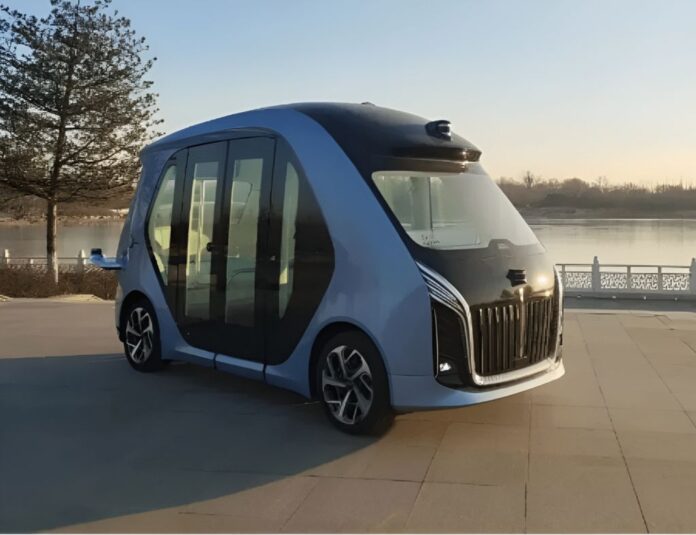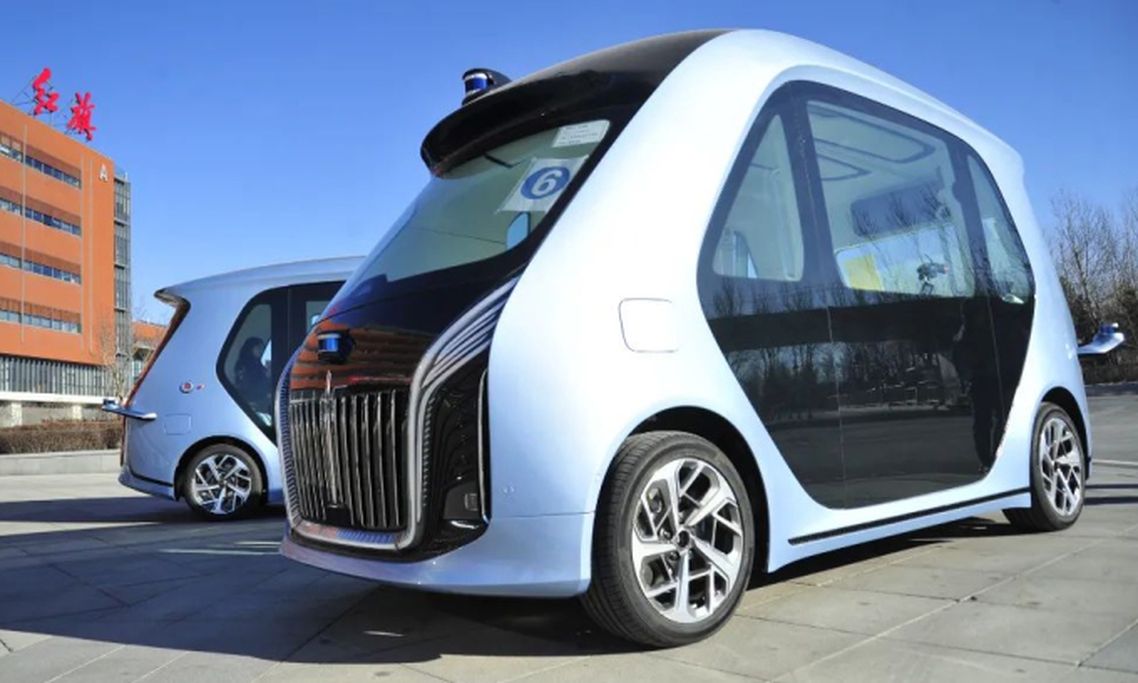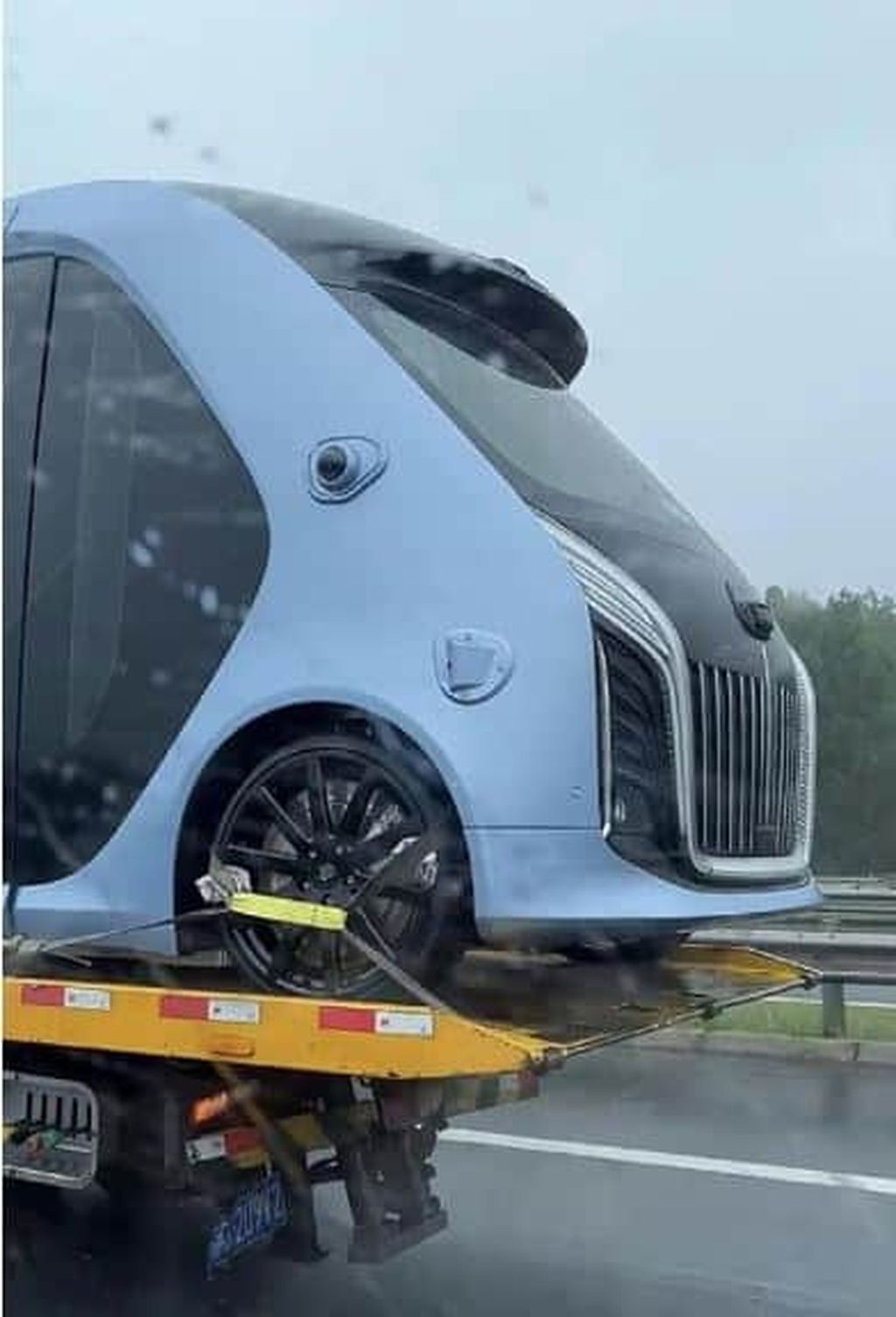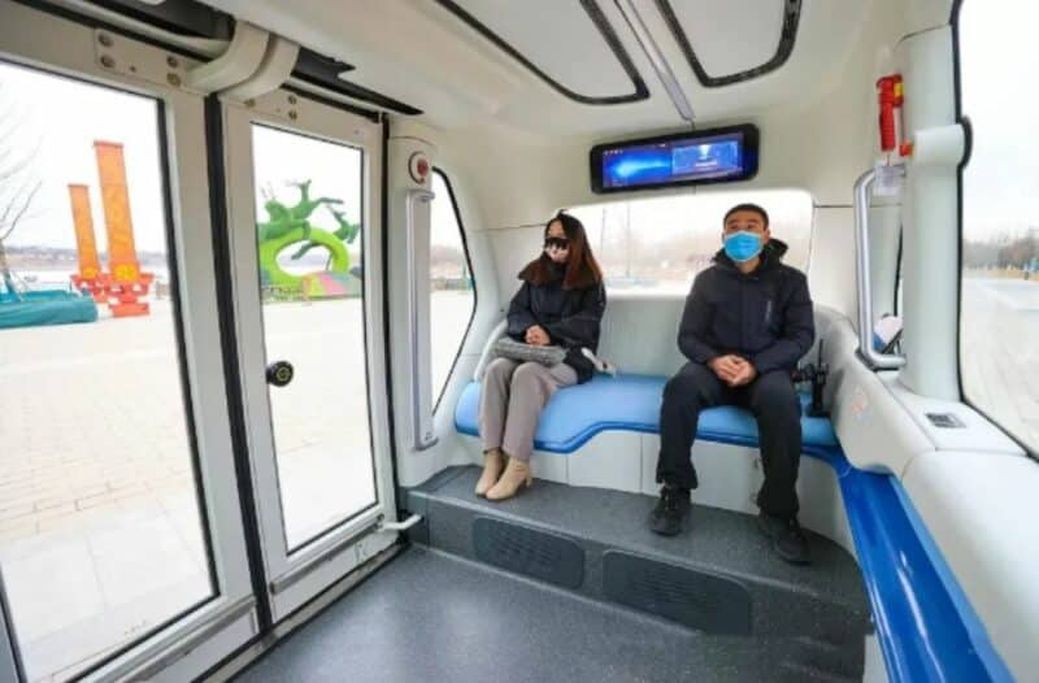China Rapidly Embracing the Shift to Smart Autonomous Driving Technology in the Automotive Industry
Recently, major Chinese cities such as Shanghai and Shenzhen have allowed public testing of autonomous vehicles. As a result, Hongqi’s mini-bus prototype was spotted testing on Chinese roads.
As seen in the images, the front of the autonomous mini-bus retains Hongqi’s distinctive design with a waterfall-style grille featuring a series of vertical chrome-plated slats. Viewed from the side, the bus has only one door and lidar sensors around the body. The interior features metal bars running vertically as handholds for passengers, a red button (possibly an emergency stop button), bench seating, and a screen near the roof.
In addition to the mini-bus, Chinese media reported that Hongqi is also testing Robotaxis. Notably, on July 10, Hongqi announced that they had received permission to test their third-generation Level 4 Robotaxis on public roads. Hongqi also mentioned that their Robotaxis had completed over 100,000 km of autonomous driving tests in the pilot zone.
According to Global Market Insights, the global autonomous vehicle market was valued at $2 trillion in 2023, while the Chinese market size was valued at $8.01 billion in 2023, per Renub Research.
As the automotive industry shifts from electrification to smart autonomous driving technology, China is quickly catching up and making significant progress. From Level 2+ driver assistance systems becoming standard to unmanned delivery and sanitation vehicles, and now Level 4 Robotaxis, China is embracing the future of mobility.
TT (Tuoitrethudo)

















































